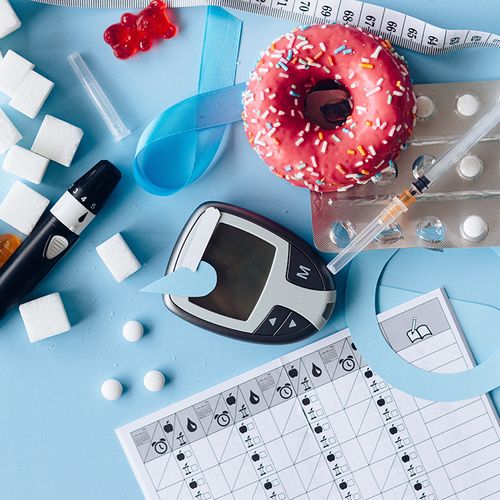Scientists say they are on the verge of developing a saliva test for monitoring type 2 diabetes, a test which might someday replace invasive blood tests.
For the first time, researchers from Oregon and India have identified proteins in saliva that appear more frequently in people with diabetes than in nondiabetics. Using these proteins, they are working to develop a test to monitor and perhaps diagnose the condition.
The report was published in the Journal of Proteome Research.
The Study
For the study, Paturi V. Rao, MD, from the departments of endocrinology and metabolism and medicine at Nizam's Institute of Medical Sciences University in Hyderabad, India, and colleagues analyzed saliva samples from people with and without type 2 diabetes. Their goal was to find proteins associated with the blood sugar disease.
The researchers found 65 proteins that occurred twice as frequently in the people with diabetes than in those without the condition.
Less Painful Glucose Testing
Using these proteins, Dr. Rao's team hopes to develop a noninvasive test for diabetes screening, detection and monitoring.
Dr. Rao's group thinks the pain involved with current diabetes monitoring causes many people with diabetes to be lax in monitoring their condition. A noninvasive test could make it easier and less painful for patients to keep track of their blood sugar levels.
"As recent studies have shown that early, multifactorial intervention in diabetes prevents cardiovascular complications and mortality, advances in understanding molecular aspects of preclinical diabetes will further facilitate accurate diagnosis and early intervention," said the authors.
Diabetes expert Charles F. Burant, MD, PhD, a professor of internal medicine at the University of Michigan, isn't convinced that a test using proteins in saliva is needed.
Dr. Burant noted that diabetes and prediabetes already have an accurate marker-glucose. "Thus, this is interesting biochemistry and raises questions why these changes occur, but the clinical utility is unclear," he said.
Umesh Masharani, MD, an associate clinical professor of medicine at the University of California, San Francisco, doesn't think this approach is going to replace current blood tests any time soon.
"This is an interesting and novel approach," Dr. Masharani said. "I do not think this approach will be used in the diagnosis or treatment of diabetes any time in the near future. It is interesting, I think, for research studies in diabetes."
Better Blood Sugar Control
One group of type 1 diabetes patients did conventional blood tests several times daily. Another group used tiny sensors (which patients place under the skin every few days using an insertion device) to continuously monitor blood sugar. With constant feedback on when to eat or take insulin, sensor users had better blood sugar control-reducing risk for diabetes complications. Prescription sensor systems can cost about $10 per day. Some insurance plans cover them.
OJ Raises Diabetes Risk by 24%
It only takes one cup of orange juice per day Ito raise diabetes risk by about 24%, according to new research.
Reason: The juice's high sugar content causes a spike in blood glucose levels.
Measure Sugar Before Meals
Individuals with diabetes should measure blood I sugar before meals to best establish their long-term blood sugar levels, says Stanley Mirsky, MD. Pre-meal sugar level is more closely aligned with long-term levels than standard blood sugar measurements taken two hours after a meal. Post-meal levels are still important to measure the effects of the meal on blood sugar.
Important: Those with diabetes should maintain a low-sugar and low-carbohydrate diet.
Web Site for Diabetes Management
Log on to www.sugarstats.com to keep track of your blood glucose levels...medication usage...food intake...and exercise. People with diabetes can use the free site to help manage their disease and share information with their health-care providers.
Exercise Helps Arthritis And Diabetes
When researchers recently analyzed physical activity among adults with both arthritis and diabetes, nearly 30% of them were sedentary, compared with 21% of those with diabetes alone, 17% of those with arthritis alone and 11% of those with neither condition.
Theory: People with both arthritis and diabetes remain inactive because they are concerned about worsening pain and joint damage, both of which can be exacerbated by excess body weight.
If you have arthritis and diabetes: Try arthritis-friendly workouts, such as walking, cycling and swimming, to help control your arthritis and diabetes.
